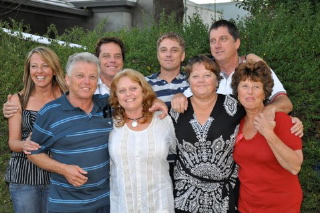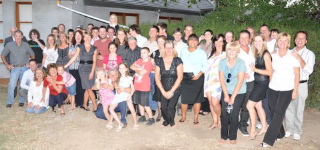‘I have so much content to get through. How can I explictly teach concepts across two years levels of curriculum and ensure my students are learning?’
Grade level standards and testing requirements can lead teachers to believe curriculum centered education works unless leaders challenge educators through evidence based practices.
I have never met a teacher who does not want to provide the best learning opportunities for their students and that’s what makes challenging grade level standards so exciting. You only have to deliver one lesson didactically and overloaded with information and you get the picture. ‘What do I have to do Miss?’ ‘What is that called again?’ Assessment results are dismal and students complain.
Multi-aged classrooms peaked in the 1990’s and then varying research, or lack thereof supported teachers in returning to curriculum centred learning regardless of their schools philosophy . To be successful in designing multi-age classrooms school leaders and teachers ‘need to consider evidence in a way that is reflective of research and best practice.’
I taught within a cluster of schools that was made up of a multi-aged primary and single year level secondary classes in Canberra Australia and recently moved to a multi-aged P-10 school. The P-10 philosophy rang true with me, however, I stood in front of my first multi-aged high school maths class and froze. ‘How do I teach year 7 and 8 maths at the same time?’ I bailed! I would have been doing them a disservice.
After restless nights with a head full of questions it was time to set up an action research project with the maths team.
We decided to split the year groups and took one year level each for the time being. At least this way the students would be learning whilst we collaboratively challenged our beliefs about how learning happened and more specifically how to design learning for multi-aged math classes in secondary school. After some productive and many not so productive planning sessions we scoped our term 3’s maths topic, algebra, across years 5-9. ‘If we can do this for algebra we can do it for anything,’ was our theory. After scoping and unpacking our understandings of algebra, as presented in the Australian Curriculum’s content descriptors and achievements standards, we decided to conduct evaluations of digital math platforms and learning management systems (LMS) to support us. One thing was certain, we would not be successful without a highly intelligent digital tool.
One of the teachers recommended HOTmaths and they offered a free terms trial for the whole cohort, approximately 100 students.
Step 1: We designed the learning sequence using HOTmaths and also trialed Schoology as the LMS.
Step 2: We designed and set our own regular pre and post testing as a formative assessment tool to monitor if HOTmaths was supporting the students skill development.
Step 3: We sourced activities to meet the deep conceptual understandings around algebra and decided to timeline workshops and provided explicit instructions through the LMS.
Step 4: We met weekly to ensure the whole program was available and online from the start of the unit.
Step 5: Celebration!!!! We had done it, year 7 and 8 could sit in the same classroom with one teacher, (who no longer felt like freezing) and have access to learning that was at their level.
Step 6: We continued to meet weekly and triangulate data from HOTmaths, the LMS and other sources. We communicated through discussion forums in Schoology unpacking individual students results, pre and post testing and general engagement in the classroom.
A common complaint from a small but vocal group of students was, ‘I’m not learning anything, I don’t understand, I like it better when you stand up the front and teach me, I need you to teach me.’ Knowing that works for 10% of the class we began sourcing video clips from Khan Academy to support those feeling disengaged. Ideally we would have made our own. Time is of the essence and more work was needed in guiding the students ability to navigate their learning through the different digital platforms. Put that thought on the agenda. We had stopped being teachers and had begun to facilitate learning. An important part of our teaching became explicit instruction about the language of mathematics. We had to teach these students how to comprehend the text on the screen. We had to teach them how to use questioning and explain their thinking through writing blogs. Oh the introduction of blogs caused another small but vocal group of students to state, ‘this is stupid, I don’t want to write a story about mathematics. This is maths not English.’ Teachers felt the same. Again the maths teacher in me was challenged however, I knew that if a student in this century was completely dependent on me then I am teaching them learned helplessness and more likely fueling their lack of confidence in mathematics.
The action research was successful. All students at our school in years 7 and 8 are learning mathematics in a multi-aged classroom. They have access to maths learning 24/7 from the three (curriculum) years that surround. They navigate back if they have demonstrated a misconception and move forward if they ‘get it.’
It’s a work in progress and by no means perfect, YET! Since this project started in term 2, 2013 we have continued to evolve and as I write this blog in 2014 from a 2013 view I am inspired by the progressiveness of our work and the dedication of the teachers I work with.
What were the key elements in to moving from single level to multi-aged math classes in high school?
1. Caring enough about today’s learners.
2. Finding a reason to have WEEKLY PLANNING sessions that focus on LEARNING in the busy life of a school!
3. Feeling safe enough in our team to put our TEACHER BELIEFS on the table at every opportunity!
4. Keeping up with relevant PROFESSIONAL readings that supported the movement!
5. Listening to student voice and RESPONDING rather than REACTING!
Sneak peek at what’s to come!
We no longer use HOTmaths??? We found a program that better suits our needs and provides formative feedback and supports our students with being self-directed learners. Mathspace! Check it out! It solved so many of the challenges faced throughout the implementation process of our algebra unit!
Blogging and maths with students gets much more spicy!
I now facilitate learning in a blended, flexible learning space. I have enhanced my understanding of how to best work with today’s learners. My beliefs about what it means to be a teacher have been challenged and will continue to be challenged and I welcome those challenges. I also welcome your comments!








 Seating plans that enhance learning and shift the agency of being a responsible learner onto the students
Seating plans that enhance learning and shift the agency of being a responsible learner onto the students

